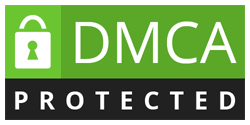Respond to at least two colleagues by doing all of the following:
· Offer critiques of their logic model as if you were a member of their work groups.
- Identify strengths of the logic models.
- Identify potential weaknesses in the assumptions or areas that may require additional information or clarification.
· Offer substantial information to assist your colleagues’ efforts such as:
- Information to support their understanding of the problems and needs in this population
- Suggestions related to intervention activities, and potential outcomes
Colleague 1: Aimee
A logic model would help us to understand the needs of the community and identify barriers to services. In looking at the needs of the community I reside in, one specific need that continues to arise is that of transportation. I live in a very rural area where public transportation is almost unheard of. There are no bus lines, taxis, or UBER. Many drivers for UBER or LIFT, will not drive out this far to aid individuals. Clients have difficulty accessing services unless they have a caseworker who is willing to transport, family in the area, or friends they can count on.
A logic model would help to identify the issue and create a plan to overcome the challenges faced with no public transportation. We could identify the need and potential solutions to the problem. Dudley tells us that “logic model provides an organizing framework for understanding evaluations” (Dudley, 2018, p. 169). IN looking at the lack of transportation, we may see a pattern in untreated mental health and substance abuse as having a correlation with a lack of transportation to appointments and no access to providers.
The short-term outcomes of public transportation would be greater access to services, such as; mental health counseling, drug and alcohol counseling, parenting, and individual counseling. The long-term outcomes would be lowered drug abuse, wider spread mental health treatment, extended revenue for the community as resources are being utilized, and the potential for lower mental health hospitalizations. Depending on how the intervention is implemented, will depend on the outcome (Dudley, 2016). The logic model, at the intervention stage, provides a framework to improve the interventions being used, (Dudley, 2016, p. 169). It allows the intervention to be focused on the unmet needs of the client and address potential success in outcomes, (Dudley, 2016).
References
Dudley, J. R. (2016). Social Work Evaluation, Enhancing What We DO (2 ed.). New York, NY: Oxford University Press.
Colleague 2: Samantha
Practice-Level Logic Model Outline
Problem
Respond to at least two colleagues by doing all of the following:
· Offer critiques of their logic model as if you were a member of their work groups.
- Identify strengths of the logic models.
- Identify potential weaknesses in the assumptions or areas that may require additional information or clarification.
· Offer substantial information to assist your colleagues’ efforts such as:
- Information to support their understanding of the problems and needs in this population
- Suggestions related to intervention activities, and potential outcomes
Colleague 1: Aimee
A logic model would help us to understand the needs of the community and identify barriers to services. In looking at the needs of the community I reside in, one specific need that continues to arise is that of transportation. I live in a very rural area where public transportation is almost unheard of. There are no bus lines, taxis, or UBER. Many drivers for UBER or LIFT, will not drive out this far to aid individuals. Clients have difficulty accessing services unless they have a caseworker who is willing to transport, family in the area, or friends they can count on.
A logic model would help to identify the issue and create a plan to overcome the challenges faced with no public transportation. We could identify the need and potential solutions to the problem. Dudley tells us that “logic model provides an organizing framework for understanding evaluations” (Dudley, 2018, p. 169). IN looking at the lack of transportation, we may see a pattern in untreated mental health and substance abuse as having a correlation with a lack of transportation to appointments and no access to providers.
The short-term outcomes of public transportation would be greater access to services, such as; mental health counseling, drug and alcohol counseling, parenting, and individual counseling. The long-term outcomes would be lowered drug abuse, wider spread mental health treatment, extended revenue for the community as resources are being utilized, and the potential for lower mental health hospitalizations. Depending on how the intervention is implemented, will depend on the outcome (Dudley, 2016). The logic model, at the intervention stage, provides a framework to improve the interventions being used, (Dudley, 2016, p. 169). It allows the intervention to be focused on the unmet needs of the client and address potential success in outcomes, (Dudley, 2016).
References
Dudley, J. R. (2016). Social Work Evaluation, Enhancing What We DO (2 ed.). New York, NY: Oxford University Press.
Colleague 2: Samantha
Practice-Level Logic Model Outline
Problem



